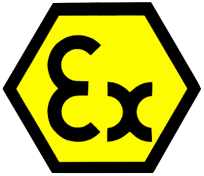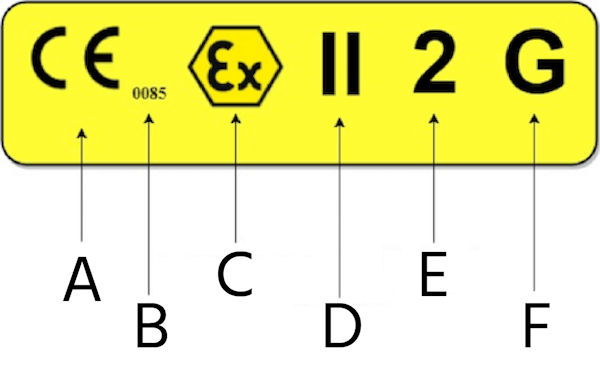ATEX Directives for Valves and Fittings

Figure 1: ATEX certification symbol
The ATEX (ATmosphères EXplosibles) Directives are legal documents that set forth critical health and safety standards for environments that could become explosive. Such an atmosphere is created when air combines with flammable gases, vapors, mists, or dust clouds, which can ignite and cause the entire unburned mixture to combust.
Note : This article is only applicable for the EU market.
Do you need ATEX certification?
In short, if the equipment will be used in a potentially explosive atmosphere a manually operated valve does not need an ATEX Certification while an electric or pneumatic operated valve does. Please view our flowchart to help you make this decision, however, this article will give you a better understanding on the ATEX Directives.
ATEX Directives
The European Union has two ATEX Directives, one for the manufacturer and one for the user of the equipment.
- Directive 2014/34/EU is for manufacturers making equipment and protective systems intended for use in potentially explosive atmospheres. This Directive divides products into ‘equipment groups’ and ‘equipment categories’.
- Directive 1999/92/EC explains the minimum requirements for employers to protect the health and safety of workers potentially at risk from explosive atmospheres. This Directive provides a ‘zone classification’ for areas where explosive atmospheres may occur based on their hazard level. This is used to determine which equipment groups and equipment categories can be used in each zone.
Directive 2014/34/EU
Before products that are intended to operate in potentially explosive atmospheres are placed on the EU market, manufacturers must ensure they meet the requirements of the ATEX Directive 2014/34/EU. This Directive leaves it to European harmonised standards to give technical expression of the relevant requirements within the Directive.
According to ATEX Directive 2014/34/EU,
(a) equipment and protective systems intended for use in potentially explosive atmospheres;
(b) safety devices, controlling devices and regulating devices intended for use outside potentially explosive atmospheres but required for the safe functioning of products referred to in point (a);
(c) and all components intended to be incorporated into products referred to in point (a) must conform to the essential requirements laid out in this Directive.
In this context, ‘equipment’ must be capable of causing an explosion through their own potential sources of ignition. Therefore, tools such as hand operated valves, hammers, ladders, doors, tanks, sight glasses, cables, fire extinguishers and so on, do not need ATEX certification as they do not have their own sources of ignition.
Manufacturers of ATEX products need to take into account potential ignitions or ignition sources such as:
- Sparks
- Flames
- Electric arcs
- High surface temperatures
- Acoustic energy
- Optical radiation
- Electromagnetic waves
- Static electricity
- Stray electric and leakage currents
- Overheating
- Pressure compensation
ATEX products are designed to have an integrated explosion safety, which means they are made:
- to prevent the formation of explosive atmospheres produced by the equipment
- to prevent the ignition of explosive atmospheres and to stray electric and leakage currents
- to halt possible explosion immediately or to limit the range of explosion flames and pressures
For more in-depth information, please refer to the actual ATEX Directive 2014/34/EU.
Directive 1999/92/EC – Zone classification
Based on the application, type of explosive atmosphere, required performance, or likelihood of exposure to hazardous atmospheres, ATEX products are divided into equipment groups and equipment categories to ensure products meet requirements for the hazard level (zone classification). For further information regarding zone classification, please see our ATEX labeling article.
For more in-depth information, please refer to the actual ATEX Directive 1999/92/EC.
Marking
All ATEX certified equipment, must have the marking shown below.

Figure 2: ATEX label: CE mark (A), notified body identification number (B), Ex symbol signifying the product's application in explosive atmosphere(C), equipment group (D), equipment category (E), and gas (G)




